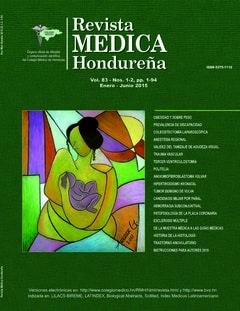Third ventriculostomy as endoscopic treatment of hydrocephalus: Experience at the national hospital “Dr. Mario C. Rivas”
Keywords:
Neurosurgical procedures, Hydrocephalus, Neurocysticercosis, NeuroendoscopyAbstract
Introduction: The placement of a system of ventriculoperitoneal shunt was long regarded as the treatment of choice for hydrocephalus, however the use of the endoscope to perform an opening in the floor of the third ventricle, in some cases proved the procedure of choice. A case series is presented and the surgical technique described third ventriculostomy. Case reports: 53 endoscopic procedures in 53 patients with non-communicating hydrocephalus were performed; 38 patients with posterior fossa tumor; 13 patients with neurocysticercosis; 2 patients with Arnold Chiari syndrome type II. Of the 53 interventions (third ventriculostomy); One patient had intraventricular hemorrhage (1.89%); 2 patients developed fistula of Cerebrospinal Fluid (3.77%) so they had to settle ventriculoperitoneal shunt; 2 patients had ventriculitis (3.77%); 8 (15%) patients required surgical intervention to placement system ventriculoperitoneal shunt due to persistent symptoms and ventricular dilatation, including patients who developed fistula, which is considered as a failure of the procedure. Was submitted no mortality. Conclusions. Endoscopic intervention is, in many cases, the procedure of choice for the treatment of non-communicating hydrocephalus with dilation of the lateral ventricles and the third ventricle. In the series presented was achieved 85% success in interventions.
Downloads
315




